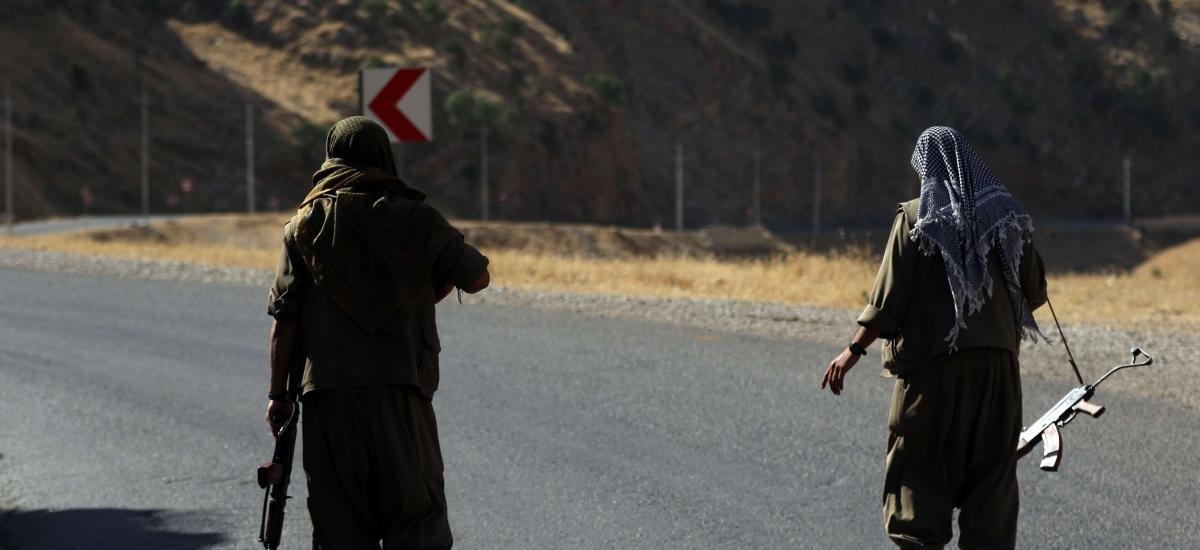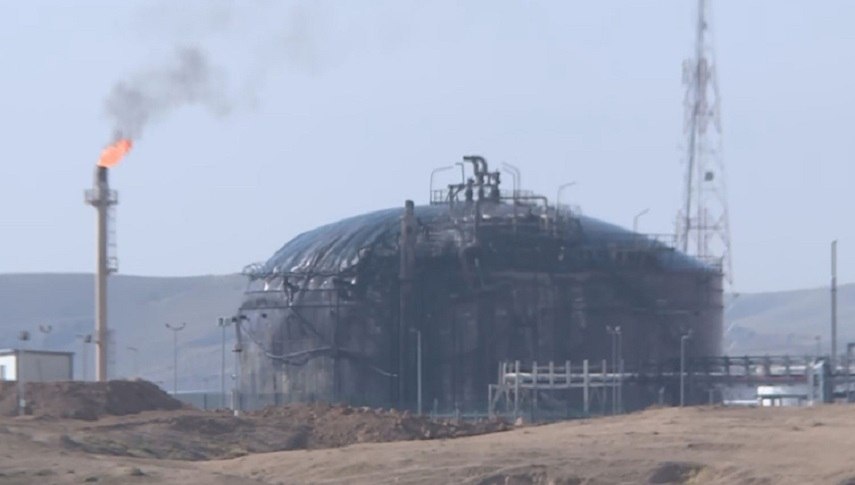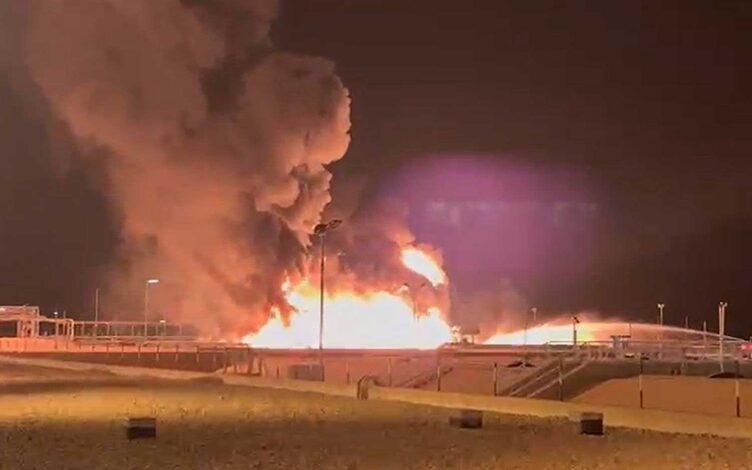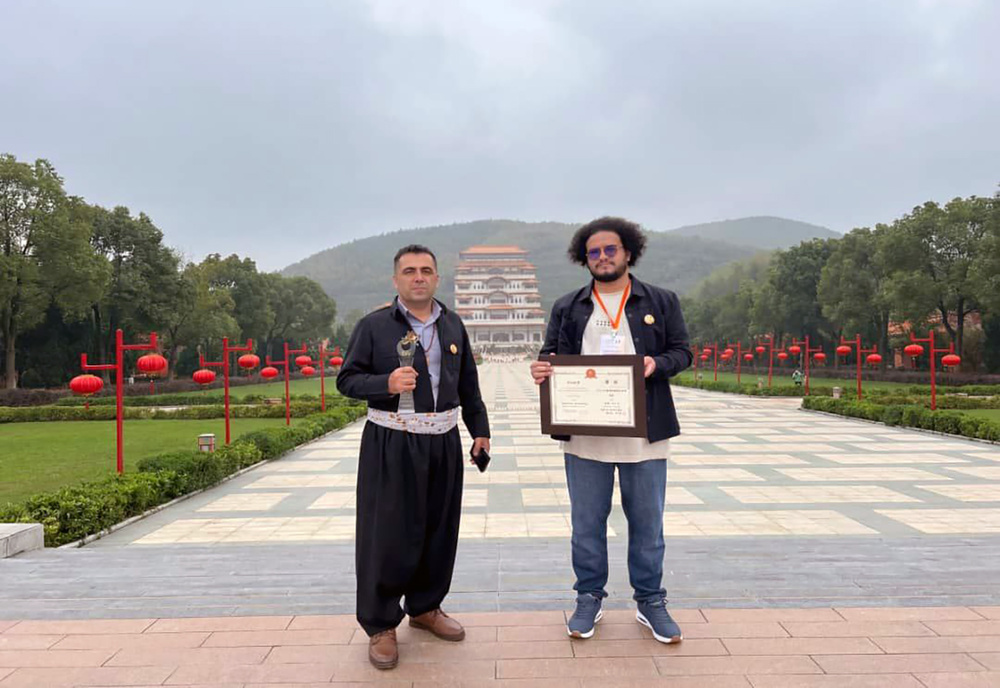Turkey began its latest operation against the PKK in early February with a “fresh demonstration of new air-war tactics”. On 2 February, an estimated 60 Turkish fighter jets launched a coordinated attack on PKK and PKK-affiliated targets in both northern Iraq and Syria simultaneously. Mandiraci notes that Turkey has increasingly relied on airpower and drones to strike the PKK in the mountains of northern Iraq, “allowing it to kill higher-level PKK cadres.”
He also notes that as the fighting spreads to new battlegrounds, it “has drawn in an increasingly complex web of actors”. For example, in northern Iraq, Turkey is partnered with the leading Iraqi Kurdish party, the Kurdistan Democratic Party (KDP), which gives it information about PKK movements.
Meanwhile, the PKK has gotten closer with the powerful Iran-backed Iraqi paramilitary groups known as the Hashd al-Shaabi.
“The expansion of the battlefield, use of new tactics and involvement of new actors make it harder to identify avenues for tamping down the conflict,” Mandiraci writes.
He demonstrates how Turkey’s conflict with the PKK, violently reignited in July 2015 following the collapse of the 2013 ceasefire, “has progressed through several phases.”
The bloodiest of these phases took place in southeast Turkey in 2015-17, when Turkey engaged the group in an urban warfare campaign in places like Diyarbakir and Sirnak. By 2017, fighting had moved from urban areas to rural areas of the region and then to northern Iraq as the Turkish military successfully pushed the militants from Turkey. Since then, the fighting has predominantly been in Iraq’s autonomous Kurdish region.
Mandiraci points out that since July 2015, roughly one in six deaths in the reignited conflict took place in Iraq and were mainly PKK militants. Furthermore, Turkey now has 40 outposts in northern Iraq with about 2,000-3,000 troops stationed in the region, some as far as 40 kilometers from the Turkish border. In neighboring Syria, Turkey has 8,000-10,000 troops in three parts of the north: the enclave of Afrin, the Azaz-Jarablus part of the northeast, and between Tal Abyad and Ras al-Ain in the northeast.
The analysis cites open-source data collected from the Armed Conflict Location & Event Data Project (ACLED) that shows the operational tempo of the conflict “reached a new peak in 2021, with more violent incidents than in any comparable period since the ceasefire broke down – including airstrikes, firefights, roadside bombings and rocket attacks.”
While there is a higher rate of violent incidents than the 2015-17 period, there is a lower level of fatalities than when the conflict was concentrated in urban areas that are more densely populated. According to the Crisis Group’s data, an average of 40 people were killed each month in 2021, most of whom were PKK fighters, compared to 150 per month back in 2016.
The introduction of Turkish-built Bayraktar TB2 drones in the conflict in 2017 has “proven a game changer for Ankara” since they provide “both armed overwatch for Turkish forces” and are capable of “targeted killing of higher-ranking PKK figures in hard-to-reach terrain in Turkey’s southeast and northern Iraq.”
Before Turkey had the TB2, it depended on unarmed surveillance drones it bought from the United States and Israel in the late 1990s and early 2000s. These lacked the strike capability of the TB2, had a more limited range, and inferior cameras.
With more advanced drone technology, Turkish forces can now advance deeper into Iraq than before and neutralize more senior PKK members. Turkish troops are better protected thanks to these drones, and their confidence and morale have increased as a result.
Citing Crisis Group data, Turkey is also killing a higher proportion of PKK members that the group classifies as commanders. Crisis Group describes them as “seasoned”.
“In 2021,” Mandiraci writes, “more than one third of the confirmed 312 PKK fighters killed were such season militants. The ratio of killed PKK militants to killed state security force members has also risen more than fourfold in Turkey’s favor since July 2015.”
Crisis Group has also recorded the deaths of 74 non-combatants in violent incidents in Iraq since July 2015. More than half of these deaths occurred after Turkey intensified its air campaign in mid-2019.
The KDP has helped facilitate Turkey’s northern Iraq campaign by permitting it to establish bases. KDP security forces have also stepped in to establish control over areas where Turkey has driven out the PKK.
As Turkey has penetrated deeper into Iraqi Kurdistan, the PKK has concurrently stepped up its influence in northern Iraq’s Sinjar district and northeast Syria. After the KDP Peshmerga were pushed out of the area by Iraqi forces following Iraqi Kurdistan’s September 2017 independence referendum, Sinjar became a PKK sanctuary governed by a Yezidi-majority PKK affiliate, the YBS.
With its control over Sinjar, the PKK has been able to use that strategic region “as a hub for outreach into Syria,” where it has strengthened ties with the YPG, its Syrian affiliate that has established an “autonomous administration” in northeast Syria.
Turkey has grown increasingly worried that PKK control over Sinjar has turned the region into a land bridge linking the PKK in northern Iraq with the YPG in northeast Syria. As a result, Turkish officials have repeatedly said they will not allow Sinjar to become a “second Qandil”, referring to the PKK’s main mountain stronghold in northern Iraq. Turkey has launched several airstrikes against the PKK and YBS in Sinjar since 2020.
“The combination of Turkey’s stepped-up operations in northern Iraq and the PKK’s entrenchment in Sinjar has driven an escalation of tensions on both sides of the Syria-Iraq border,” Mandiraci writes.
As the PKK loses ground in Turkey and parts of northern Iraq, it has exerted more control over YPG-controlled areas of northeastern Syria and recruited more fighters.
“Northern Syria has almost become something like a pressure relief valve for the PKK. … The more Turkey squeezes the PKK in Turkey and Iraq, the more its cadres assert themselves in Syria,” said a security analyst quoted in the piece.
Over the past two years, the YPG has clashed with Turkey and its militia proxies in northern Syria more frequently. Turkey believes the PKK is behind an increase in roadside bombs and rocket attacks targeting Turkish-occupied areas of northern Syria along with cross-border strikes from Syria against Turkey.
In his conclusion, Mandiraci believes that Turkey “will almost certainly continue to rely on air power to battle the PKK in Turkey, Iraq and Syria, with all the repercussions that entails.”
“Its military campaign supported by advanced drone technology has been effective in curbing the PKK’s presence in south-eastern Turkey and northern Iraq,” he added. “But it has also fueled intra-Kurdish rivalry between the KDP and PKK in northern Iraq, and exacted a toll on civilians living in the area, compelling some to leave their homes.”
With the Turkish campaign against the PKK drawing in new actors in both Iraq and Syria, Mandiraci anticipates that “a number of factors could stir up the already volatile mix.”
He also warns that the “risk of escalation is higher than the chances that things will settle down, but there are measures that the parties and their partners from outside the region can take to improve the odds.”
Implementation of the Sinjar Agreement in Iraq, which necessitates the evacuation of all armed groups from that region, including the PKK and its affiliates, and the U.S. persuading the YPG to “rein in attacks on Turkish troops” and pushing Turkey “refrain from widening its military operations in the area” could be a start.
“Such measures will be difficult to advance and would only go some way toward defusing tensions, but they could still be helpful to eventually forestall new bouts of violence,” he concluded.
Ahval
Reporter's code: 50101







Your Comment